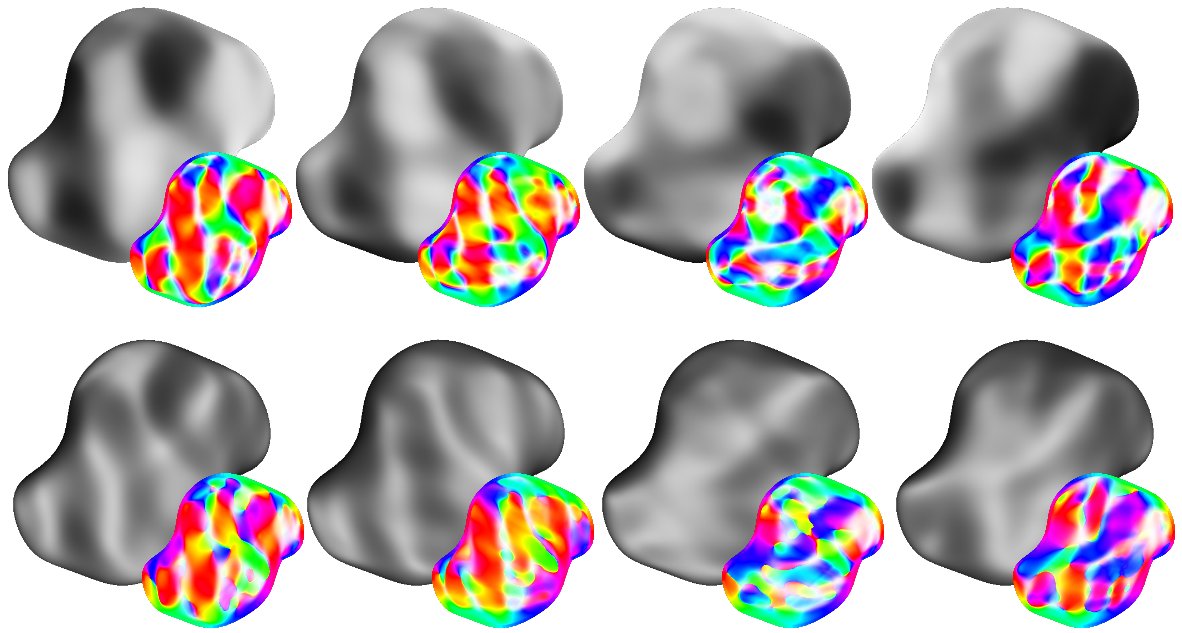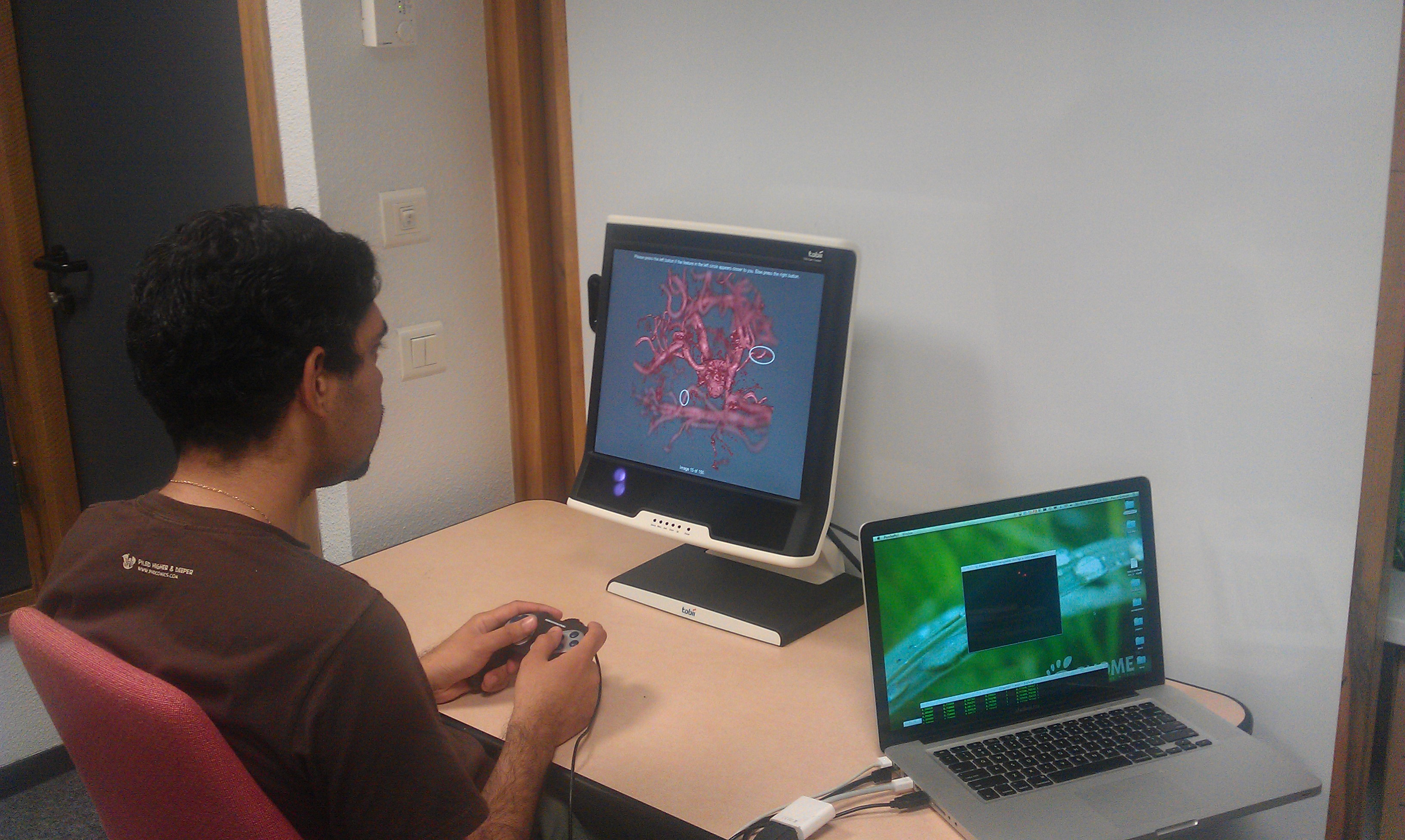Section: New Results
Visual perception
Decomposing intensity gradients into information about shape and material
Participants : Pascal Barla, Romain Vergne, Roland W. Fleming.
Recent work has shown that the perception of 3D shapes, material properties and illumination are inter-dependent, although for practical reasons, each set of experiments has probed these three causal factors independently. Most of these studies share a common observation though: that variations in image intensity (both their magnitude and direction) play a central role in estimating the physical properties of objects and illumination. Our aim is to separate retinal image intensity gradients into contributions of different shape and material properties, through a theoretical analysis of image formation. We find that gradients can be understood as the sum of three terms: variations of surface depth conveyed through surface-varying reflectance and near-field illumination effects (shadows and inter-reflections); variations of surface orientation conveyed through reflections and far-field lighting effects; and variations of surface micro-structures conveyed through anisotropic reflections. We believe our image gradient decomposition constitutes a solid and novel basis for perceptual inquiry. We first illustrate each of these terms with synthetic 3D scenes rendered with global illumination. We then show that it is possible to mimic the visual appearance of shading and reflections directly in the image, by distorting patterns in 2D. Finally, we discuss the consistency of our mathematical relations with observations drawn by recent perceptual experiments, including the perception of shape from specular reflections and texture. In particular, we show that the analysis can correctly predict certain specific illusions of both shape and material.
Predicting the effects of illumination in shape from shading
Participants : Roland W. Fleming, Romain Vergne, Steven Zucker.
Shading depends on different interactions between surface geometry and lighting. Under collimated illumination, shading is dominated by the 'direct' term, in which image intensities vary with the angle between surface normals and light sources. Diffuse illumination, by contrast, is dominated by 'vignetting effects' in which image intensities vary with the degree of self-occlusion (the proportion of incoming direction that each surface point 'sees'). These two types of shading thus lead to very different intensity patterns, which raises the question of whether shading inferences are based directly on image intensities. We show here that the visual system uses 2D orientation signals ('orientation fields') to estimate shape, rather than raw image intensities and an estimate of the illuminant. We rendered objects under varying illumination directions designed to maximize the effects of illumination on the image. We then passed these images through monotonic, non-linear intensity transfer functions to decouple luminance information from orientation information, thereby placing the two signals in conflict (Figure 6 ). In Task 1 subjects adjusted the 3D shape of match objects to report the illusory effects of changes of illumination direction on perceived shape. In Task 2 subjects reported which of a pair of points on the surface appeared nearer in depth. They also reported perceived illumination directions for all stimuli. We find that the substantial misperceptions of shape are well predicted by orientation fields, and poorly predicted by luminance-based shape from shading. For the untransformed images illumination could be estimated accurately, but not for the transformed images. Thus shape perception was, for these examples, independent of the ability to estimate the lighting. Together these findings support neurophysiological estimates of shape from the responses of orientation selective cell populations, irrespective of the illumination conditions.
|
Evaluation of Depth of Field for Depth Perception in DVR
Participants : Pascal Grosset, Charles Hansen, Georges-Pierre Bonneau.
We study the use of Depth of Field for depth perception in Direct Volume Rendering (Figure 7 ). Direct Volume Rendering with Phong shading and perspective projection is used as the baseline. Depth of Field is then added to see its impact on the correct perception of ordinal depth. Accuracy and response time are used as the metrics to evaluate the usefulness of Depth of Field. The on site user study has two parts: static and dynamic. Eye tracking is used to monitor the gaze of the subjects. From our results we see that though Depth of Field does not act as a proper depth cue in all conditions, it can be used to reinforce the perception of which feature is in front of the other. The best results (high accuracy & fast response time) for correct perception of ordinal depth is when the front feature (out of the users were to choose from) is in focus and perspective projection is used. Our work has been published in the proceedings of the Pacific Graphics conference in 2013 [16] .
|




